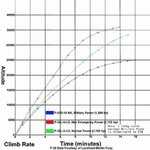lesofprimus
Brigadier General
And ur confirming something that I, and many others here, urself included, knew for years...So there you have it, the P-38 could not follow the Fw-190 Dora-9 in a climb, not even when the Dora-9 was flying at its second best power rating and the P-38 at its highest, it simply didn't have the power or the lift necessary.

